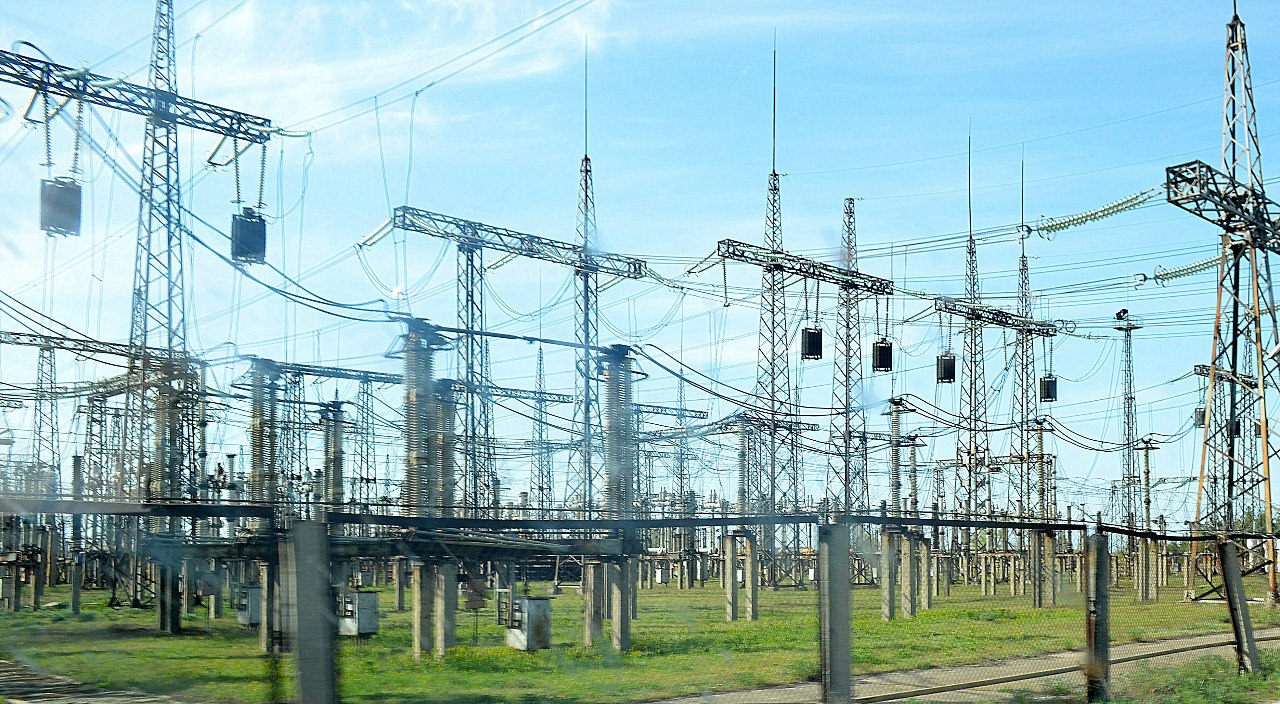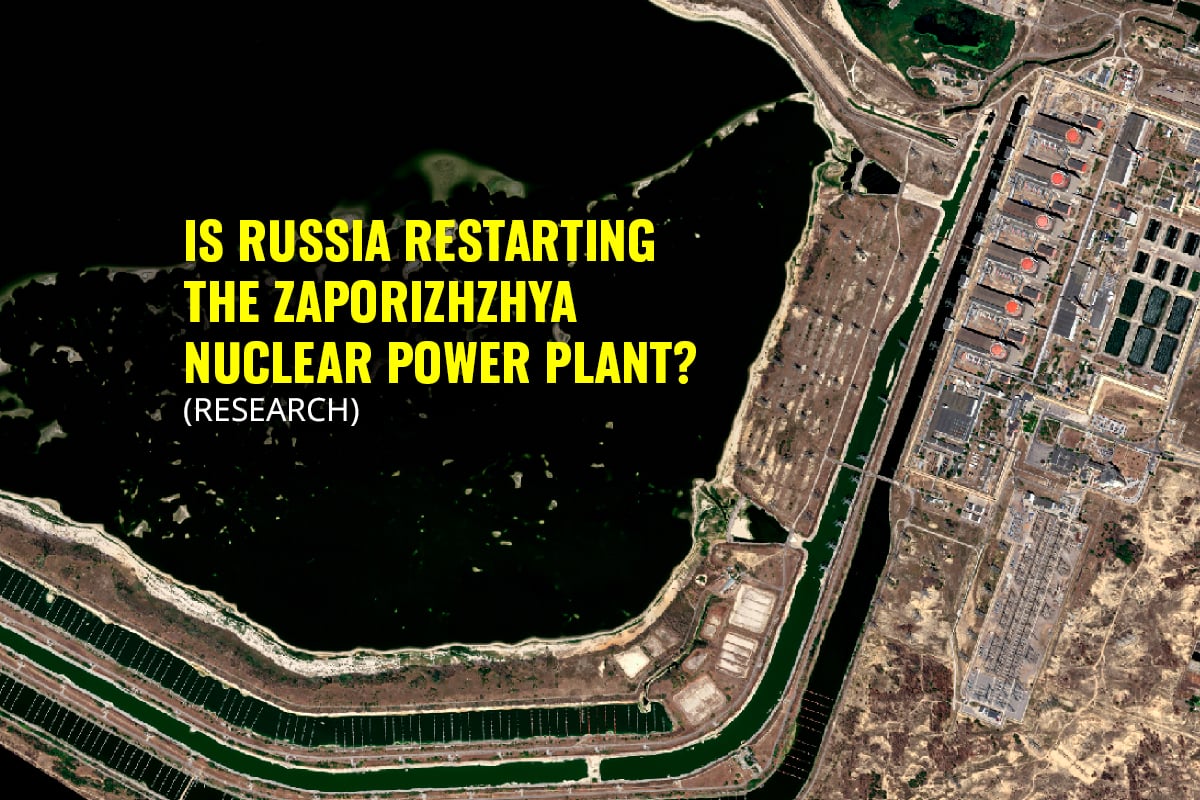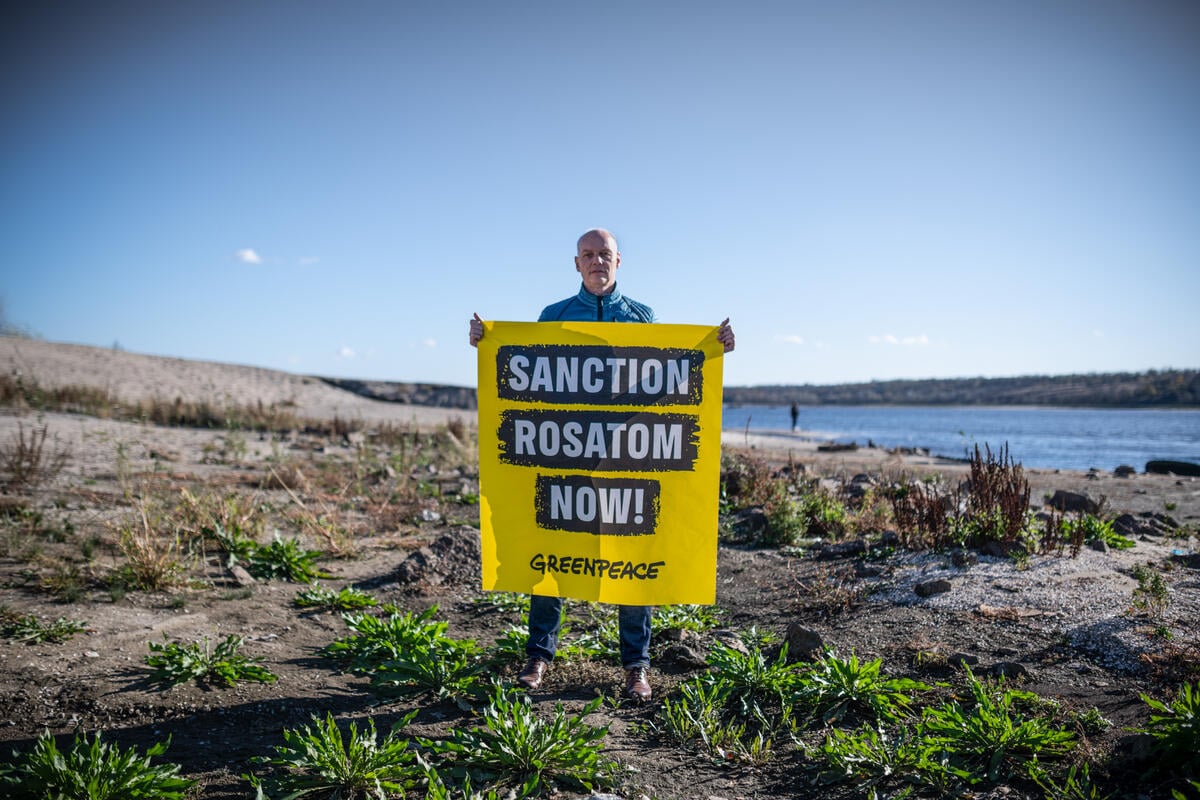Kyiv, 2 October 2024 – The head of Greenpeace International has written to the International Atomic Energy Agency (IAEA) to urgently request that it steps up its inspection of nuclear and electrical infrastructure in Ukraine. It comes as the environmental group’s Kyiv office released a new analysis warning that Ukraine’s nuclear safety crisis was entering a ‘uniquely dangerous phase’ due to repeated Russian attacks on the electric system, and recent reports warning of future attacks on nuclear reactors.
The IAEA already agreed in early September that it would expand its presence in Ukraine to monitor electric substations, by placing permanent missions at the sites. However, apart from one IAEA visit on 6 September, no further action has been taken.
“The emerging nuclear crisis in Ukraine is a unique threat in the history of nuclear power and the history of the IAEA. It is now time for the IAEA to act more decisively both in clear and unambiguous communications to the Russian government and in its action for the immediate deployment of the expanded mission to critical substation infrastructure,” said Shaun Burnie, nuclear expert of Greenpeace’s Kyiv office.
The new analysis by Greenpeace Ukraine shows how fragile and vulnerable Ukraine’s electricity system has become as a result of Russia’s deliberate attacks since 2022, and explains why there is a high risk of an unprecedented nuclear disaster now. If the attacks against the electricity system continue in Ukraine, the stable frequency in electricity supply essential to maintain vital reactor cooling functions, could fail. Under such circumstances, operating reactors would undergo rapid heating, resulting in reactor core damage, leading to nuclear fuel meltdown and releases of radioactivity.
In November 2022 when Ukraine’s nuclear power plants lost electricity connection from the grid, and an emergency shutdown took place, the electricity system was still sufficiently robust to provide enough electricity generation capacity in the grid that could restart reactors and connect them back to the grid.
Today, however, Russian attacks have already incapacitated most of the country’s non-nuclear power plants, which traditionally help maintain stability in the power grid. In addition, Ukraine’s national electricity system is under constant attack. If Russia’s deliberate attacks on Ukraine’s electricity system continue into this winter, there is a risk that the electrical grid could collapse and not be restarted.
“Ukraine is in the trap of nuclear energy. No nuclear power program in the world has been designed to cope with the scale of disruption the full-scale Russian war has inflicted on Ukraine’s energy system and its consequences for nuclear power plant safety,” said Jan Vande Putte, nuclear expert at Greenpeace Ukraine, “Now is the time to stress the responsibility of IAEA and world leaders in stopping Russia’s attack on Ukraine’s electricity system.
Beyond the immediate deployment of an extended IAEA mission, Greenpeace Austria stresses the need for the full support of the international community for large-scale investments in Ukraine’s green reconstruction to protect and rebuild its energy infrastructure. To make Ukraine energy independent and less vulnerable to military attacks, Greenpeace Austria calls for:
- a further increase in the import capacity through the European Network of Transmission System Operators for Electricity (ENTSO-E) grid interconnections to Ukraine;
- the expansion of energy efficiency measures and smart metres to reduce and better manage demands on the electricity grid;
- deployment of decentralised renewable energy, such as solar and wind power, combined with battery storage to be less dependent on power stations.
Links to Greenpeace Ukraine’s analysis and its executive summary:
- Risk of unprecedented nuclear disaster if Russia’s attacks on Ukraine’s electricity system continue – analysis by Greenpeace Ukraine
- Executive summary of the Analysis



